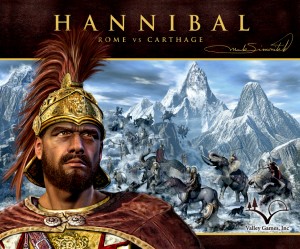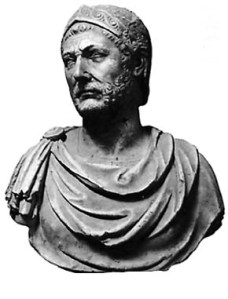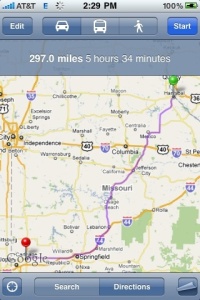
Aeneas and Dido
What role did Carthage and Hannibal play in the history of Rome as Virgil saw it — ie, in the entire millennium between the Trojan War and Emperor Augustus?
Last time in this mini-thread on the Aeneid, I tried to sketch the big historical picture of that great poem, the overarching tale of how a band of Trojan survivors arrived in Italy and merged with the Latin race to found what would become, fifteen generations hence, the Roman nation.
But I promised in that post to pay a bit more attention to Hannibal and Carthage. For Aeneas the Trojan, the three Punic Wars between Rome and Carthage would not start for another thousand years. For Virgil and Augustus, the worst memories of those Punic Wars (ie, the years when Hannibal was in Italy) already lay two centuries in the past. Did Carthage need to be in this story at all?
And how.
It is clear that Virgil and the Romans in the time of Augustus still considered Hannibal their worst enemy ever, the man who brought them closest to extinction. And so Virgil almost stuctures the entire poem around Carthage, albeit in very subtle and psychologically surprising ways. Here goes:
Juno (Hera) again….
Hera, whom the Romans called Juno, has already come up repeatedly as an almost generic source of trouble in antiquity, as when she drove Hercules mad in her jealousy. Well, the Aeneid takes place just after the Trojan War, and Virgil has Juno still seething with rage at the indignity that caused that war, which was Paris’ choice of Aphrodite (Venus) over Hera as “the most beautiful.” Venus, of course, not only went on to fight for the Trojans but was also the mother of Aeneas.
So Juno would do everything she could to torment Aeneas:
… the origins of that anger, that suffering, still rankled: deep within her, hidden away, the judgment Paris gave, snubbing her loveliness; the race she hated… (I, 38-41)
And so Virgil starts his poem, on the very first page, with Juno and her new obsession, which is Carthage (“new city” in Punic), which was just then being built, at least in this mythical version:
Tyrian settlers in that ancient time held Carthage, on the far shore of the sea, set against Italy and Tiber’s mouth, a rich new town, warlike and trained for war. And Juno, we are told, cared more for Carthage than for any walled city of the earth… There her armor and chariot were kept, and, fate permitting, Carthage would be the ruler of the world. So she intended, and so nursed that power. But she had heard long since that generations born of Trojan blood would one day overthrow her Tyrian walls, and from that blood a race would come in time with ample kingdoms, arrogant in war, for Libya’s ruin… (I, 20-32)
There, in a nutshell, you already have it all: Juno would nurse Carthage to become the world power, and yet she already knew that destiny intended, after a bloody struggle, for Rome to “overthrow its walls” and be its “ruin.”
(Tyrian refers to Tyre, Carthage’s mother city in Phoenicia, today’s Lebanon. Libya at the time referred to the inhabitants of northern Africa.)
Carthage as eastern temptress
Aeneas and his Trojans, meanwhile, are at sea, trying to reach Italy. Juno tries to kill them, by persuading the god of winds to cause a storm. She almost succeeds. 13 of Aeneas ships sink, and only 7 remain. And where do they land?
At Carthage, as it is being built. Its ruler is the beautiful and good queen Dido. Dido is more than generous to these Trojan refugees. She even offers to share her kingdom:
Would you care to join us in this realm on equal terms? The city I build is yours; haul up your ships; Trojan and Tyrian will be all one to me. (I, 776-779.)
And then she beholds Aeneas, the Trojan leader, and falls for him,
for she who bore him [Venus] breathed upon him beauty of hair and bloom of youth and kindled brilliance in his eyes…. (I, 801-803)
From the start, there is a scintillating and even erotic chemistry between “Carthage” and “Rome”, these two opposites who are yet so attracted to each other.
So Dido asks to hear Aeneas tell of the sack of Troy, that Greek genocide about which all people in the Mediterranean had by then heard. Aeneas describes it, in Book II of the Aeneid, in harrowing detail (in the picture above, Dido is listening to him as Ascanius, Aeneas’ little boy, sits on her lap). Aeneas also tells of his wanderings, his “Odyssey”, that brought him from Troy to Carthage.
Did0 listens and is rapt:
The queen, for her part, all that evening ached with longing that her heart’s blood fed, a wound or inward fire eating her away. The manhood of the man, his pride of birth, came home to her time and again; his looks, his words remained with her to haunt her mind, and desire for him gave her no rest. (IV, 1-7)
They get together, in a wild cave on a wild night. It must have been great, for she wants more, infinitely more. In fact, she considers herself married.
Virgil’s Roman audience at this point pictures not only the temptresses that tried to seduce Odysseus but Cleopatra, another queen in northern Africa who had very recently led astray a great Roman (Mark Antony) with her wily and erotic eastern ways. This is titillating stuff to the Romans.
Indeed, Aeneas almost seems inclined to change his plans and stay with Dido. But this is not his duty, and he is “dutiful Aeneas”, pius Aeneas. Jupiter, via Mercury, reminds him unequivocally of his destiny: to go to Italy and sire the Roman race.
Aeneas understands and decides to be on his way. But he doesn’t know how to tell Dido. Indeed he fears her. So he orders the ships to prepare to sail away at night.
Dido finds out and goes into a rage, the mother of all meltdowns. As Cheri has said elsewhere, it is not a testosterone rage as Hercules might have it, defined as violent, intense and short. No, it is an “estrogen rage”: deep, lingering, even eternal and ultimately more destructive.
Thus Dido (Carthage) ceases being Aeneas’ (Rome’s) lover and becomes instead his enemy, indeed the enemy of his entire race:
Then, O my Tyrians, besiege with hate his progeny and all his race to come: Make this your offering to my dust. No love, no pact must be between our peoples; No, but rise up from my bones, avenging spirit! Harry with fire and sword … Coast with coast in conflict, I implore, and sea with sea, and arms with arms: may they contend in war, themselves and all the children of their children! (IV, 865-875)
Then she stabs herself with a sword and hurls herself on a funeral pyre.
Every Roman of Virgil’s day would have understood whom Dido was summoning as this “avenging spirit”: Hannibal.
Indeed, just in case anybody was still confused, Virgil later, in Book X, has Jupiter himself make it more explicit. At a council of the gods on Olympus, Jupiter says
the time for war will come — you need not press for it — that day when through the Alps laid open wide the savagery of Carthage blights the towns and towers of Rome. (X15-19)
You almost get the sense that the entire Aeneid was mere prologue … to this:






 There on the left you see John. He baptized people.
There on the left you see John. He baptized people.










 One thread on The Hannibal Blog, as regular readers know, is
One thread on The Hannibal Blog, as regular readers know, is